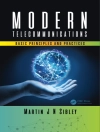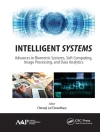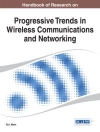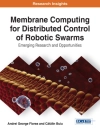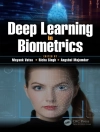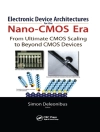The book provides the reader with a profound knowledge of basic principles, properties and preferred applications of diverse kinds of CO2 measurement. It shows the advantages, disadvantages and limitations of several methods and gives a comprehensive overview of both possible applications and corresponding boundary conditions. Applications reach from environmental monitoring to safety control to biotechnology and food control and finally to medicine.
Table des matières
Scientific Biographies of the Authors xiii
Scientific Biographies of the Co-Authors to Chapter 16 xvii
Preface xix
Part I General 1
1 Introduction 3
Wolfram Oelßner
Reference 6
2 Carbon Dioxide in General 7
Detlev Möller, Manfred Decker, Jens Zosel, and Wolfram Oelßner
2.1 Chemical and Physical Properties of Carbon Dioxide 7
2.1.1 Chemical Properties of Carbon Dioxide 7
2.1.1.1 Chemical Properties 7
2.1.1.2 Industrial Use of Carbon Dioxide 8
2.1.2 Physical Properties of Carbon Dioxide 9
2.1.2.1 Mechanical Properties 9
2.1.2.2 Thermally Related Properties 10
2.1.2.3 Electrical Properties 12
2.1.2.4 Optical Properties 12
2.2 The Carbon Cycle 13
2.2.1 Sources of Carbon on Earth 13
2.2.2 Carbon Pools and Global Cycling 18
2.2.3 Carbon Budget 23
2.2.4 Subsurface CO2 Monitoring 28
2.3 Anthropogenic CO2 29
2.3.1 Biomass Burning 30
2.3.2 Land-Use Change and Deforestation 33
2.3.3 Fossil Fuel Burning 35
References 37
Part II Principles of Carbon Dioxide Sensors and Measuring Methods 45
3 Analytical Methods for the Detection of Gaseous CO2 47
Gerald Gerlach, Armin Lambrecht, and Wolfram Oelßner
3.1 Spectroscopy 47
3.1.1 Molecular Vibrations of Molecules, in Particular CO2 48
3.1.2 Characteristic Wave Numbers and Wavelengths of Gases 49
3.1.3 Absorption of Radiation in Molecules 52
3.1.4 Molecular Absorption in the Infrared Range 52
3.1.5 Line Shapes for Molecular Absorption in the Infrared Range 53
3.1.5.1 Line Broadening 54
3.1.5.2 High-Resolution Transmission Molecular Absorption Database 54
3.1.5.3 Lorentzian Line Shape 54
3.1.5.4 Gaussian Line Shape 55
3.1.5.5 Applicability of Line Shapes 55
3.1.5.6 Spectral Resolution of Individual Ro-vibrational Absorption Lines 55
3.1.6 CO2 Absorption in the Infrared Range 55
3.1.7 Laser Spectroscopy 58
3.1.7.1 Basic Measurement Concepts 60
3.1.7.2 Properties of Lasers Suitable for TLAS 61
3.1.7.3 Laser Absorption Spectroscopy Measurement Schemes 62
3.2 Gas Chromatography 67
3.2.1 Functional Principle 67
3.2.2 Classification of Chromatographic Methods 69
3.2.3 Gas Chromatography Instrumental Components 69
3.2.3.1 Autosampler 70
3.2.3.2 Sample Injection Port 70
3.2.3.3 Column 71
3.2.3.4 Carrier Gas 72
3.2.3.5 Stationary Phase 72
3.2.3.6 Detectors 75
3.2.3.7 Data Analysis 75
3.2.4 Gas Chromatography of Gaseous CO2 76
3.3 Analytical Determination of CO2 in Liquids 76
References 81
4 Electrochemical CO2 Sensors with Liquid or Pasty Electrolyte 87
Manfred Decker, Wolfram Oelßner, and Jens Zosel
4.1 Severinghaus-Type Membrane-Covered Carbon Dioxide Sensors 87
4.1.1 The Severinghaus Principle 87
4.1.1.1 Stow’s Electrode with [Na+]=0 mol l−1 92
4.1.1.2 Severinghaus Electrode with [Na+]>0.001 mol l−1 93
4.1.2 Sensor Electrolyte 95
4.1.3 Membrane Materials 96
4.1.4 Temperature Dependence 98
4.1.5 Response Behaviour 98
4.1.6 Calibration of Electrochemical CO2 Sensors 102
4.2 Coulometric and Amperometric CO2 Sensors 103
4.2.1 Operation Principle 103
4.2.2 Ir O2 Electrode 105
4.2.3 Amperometric CO2 Sensors 105
4.3 Conductometric CO2 Sensors 108
4.4 Quinhydrone CO2 Electrode 110
References 111
5 Potentiometric CO2 Sensors with Solid Electrolyte 117
Hans Ulrich Guth
5.1 Indirect Measurement of CO2 in Hot Water Gas 117
5.2 Direct CO2 Measurement with Solid Electrolyte Cells 119
5.2.1 Functional Principles of Solid Electrolyte CO2 Cells 119
5.2.2 General Setup 123
5.2.2.1 Pellet Sensors 123
5.2.2.2 Thick-Film Sensors 123
5.3 Solid-State Sensors Based on Changes in Capacity and Resistivity 129
References 130
6 Opto-Chemical CO2 Sensors 133
Gerald Gerlach and Wolfram Oelßner
6.1 Liquid Reagent-Based Opto-Chemical CO2 Sensors 133
6.2 CO2 Detector Tubes 136
6.3 Fibre-Optic Fluorescence CO2 Sensors 141
6.3.1 Fibre-Optic Sensors 141
6.3.1.1 Light Propagation in Optic Fibres 141
6.3.1.2 General Set-Up and Basic Components 142
6.3.1.3 Optical Fibres 142
6.3.1.4 Interaction Between Light and External Measurand 144
6.3.1.5 Advantages of Fibre-Optic Sensors 146
6.3.2 Fibre-Optic Fluorescence Gas Sensors 146
6.3.2.1 General 146
6.3.2.2 Fluorescent Sensor Dyes for CO2 Detection 146
6.3.2.3 Fibre-Optic CO2 Sensors 148
6.3.2.4 Commercial Fibre-Optic CO2 Sensor Solutions 150
References 152
7 Non-dispersive Infrared Sensors 157
Gerald Gerlach
7.1 Basic Principle and General Set-Up 157
7.1.1 General Set-Up 157
7.1.2 Gas Selectivity 159
7.2 NDIR Components 159
7.2.1 Infrared Detectors 159
7.2.1.1 Pyroelectric IR Sensors 160
7.2.1.2 Thermopiles 164
7.2.1.3 Comparison of Detectors 165
7.2.2 Wavelength Selection by IR Filters 167
7.2.2.1 IR Filters 167
7.2.2.2 Fabry–Pérot Filters 168
7.2.3 IR Radiation Sources 171
7.2.3.1 Requirements 171
7.2.3.2 IR Radiation Source Selection 171
7.2.3.3 Thermal Emitters 173
7.2.4 Gas Sensors for Measuring CO2 in Gas Mixtures 174
7.3 NDIR Sensors 175
7.3.1 Commercial NDIR Sensors 175
7.3.2 Application for Very Small Concentrations and for Liquid Samples 177
7.3.2.1 Pre-Concentrators for Low Gas Concentrations 177
7.3.2.2 Measurement of Dissolved CO2 in Liquids by Using Permeation Methods 177
7.4 IR Spectrometers 178
7.4.1 Types of IR Spectrometers 178
7.4.2 Applications 181
7.5 IR Imaging for CO2 Detection 182
References 184
8 Photoacoustic Detection of CO2 191
Frank Kühnemann
8.1 Photoacoustic Effect and Photoacoustic Gas Detection 191
8.1.1 Photoacoustic Cell as Gas-Specific Radiation Detector 192
8.1.2 Photoacoustic Detection in the Sample Cell 193
8.2 Photoacoustic Signal Generation 194
8.3 Photoacoustic Gas Analysis with Thermal Sources 197
8.3.1 Photoacoustic Cell as Gas-Specific Radiation Detector 197
8.3.2 Miniaturized PA Detection Systems 199
8.3.3 Photoacoustic Detection in the Gas Sample 200
8.4 Laser-Based Photoacoustic Trace Gas Detection 202
8.4.1 General Overview 202
8.4.2 Resonant Photoacoustic Cell Design 203
8.4.3 Acoustic Detectors 204
8.4.3.1 Quartz-Enhanced Photoacoustic Spectroscopy 205
8.4.3.2 Cantilever-Enhanced Laser-PAS 208
8.4.4 Detection Limits of CO2 Gas Analysis with Laser-Based PAS 209
References 210
9 Acoustic CO2 Sensors 215
Gerald Gerlach
9.1 Basic Principles of Resonant Sensors 216
9.1.1 General Set-Up 216
9.1.2 Piezoelectric Resonators 218
9.1.2.1 Circuit Model 218
9.1.2.2 Resonance Frequencies 220
9.1.2.3 Types of Piezoelectric Resonant Sensors 221
9.2 Quartz Crystal Microbalance Sensors 222
9.2.1 Quartz as Resonator Material 222
9.2.2 Thickness Shear Mode Sensors 223
9.2.2.1 Vibration Modes 223
9.2.2.2 Sensitivity 225
9.2.2.3 Commercial QCM Sensors 226
9.2.3 CO2-Sensitive Coating 226
9.2.4 Other Applications of CO2-Sensitive QCMs 226
9.3 Surface Acoustic Wave Sensors 228
9.3.1 Operation Principle 228
9.3.1.1 Excitation of Surface Acoustic Waves 228
9.3.1.2 Operation Modes of SAW Sensors 229
9.3.2 SAW Sensor Materials 231
9.3.3 SAW Devices 232
9.3.4 CO2-Sensitive SAW Sensors 235
9.4 Ultrasonic CO2 Sensors 235
9.4.1 Operation Principle 235
9.4.1.1 Velocity of Sound in Gases 235
9.4.1.2 Basic Set-Up 239
9.4.2 Ultrasonic Sensors for CO2 Detection 240
References 241
10 Miscellaneous Approaches 247
Wolfram Oelßner, Manfred Decker, and Gerald Gerlach
10.1 Hydrogel-Based CO2 Sensors with Pressure Transducer 247
10.2 Miniaturized and ISFET-Based CO2 Sensors 250
10.3 Thermal Conductivity CO2 Detectors 253
10.4 Membrane-Based CO2 Sensors with Pressure Measurement 256
References 258
11 Survey and Comparison of Methods 263
Hans Ulrich Guth, Gerald Gerlach, and Wolfram Oelßner
Part III Applications 273
12 Environmental CO2 Monitoring 275
Detlev Möller and Wolfram Oelßner
12.1 CO2 and Climate Change 275
12.1.1 The Carbon Dioxide Environmental Problem 275
12.1.2 Rise of Atmospheric CO2 276
12.2 Atmospheric CO2 279
12.2.1 Pre-industrial CO2 Level 279
12.2.2 Pre-industrial CO2 Level Derived from Ice Core Data 283
12.2.3 CO2 Increase in the Twentieth Century 286
12.2.3.1 Mauna Loa CO2 Record 286
12.2.3.2 Latitudinal Variation 289
12.2.3.3 Timely Variations 290
12.2.3.4 The City Dome CO2 291
12.2.4 Atmospheric CO2 Residence Time 292
12.2.5 Atmospheric CO2 Chemistry 294
12.3 Oceanic and Water CO2 and Carbonate Content 297
12.3.1 CO2 Water Chemistry 297
12.3.2 Total Dissolved Carbon (DIC) 301
12.3.3 Changing Seawater Carbonate 303
12.3.4 Oceanic CO2 Measurements 307
12.3.5 CO2 Measurements in Waters and Boreholes 312
References 317
13 CO2 Safety Control 329
Wolfram Oelßner
13.1 Limit Values for CO2 Concentrations at Workplaces 329
13.2 CO2 in Buildings and Workplaces 330
13.2.1 Air Quality with Respect to CO2 330
13.2.2 Sick-Building Syndrome 332
13.2.3 Dangerous Areas 334
13.3 CO2 Warning Devices 336
13.3.1 CO2 Detector and Dosimeter Tubes 336
13.3.2 Electrochemical CO2 Sensors 337
13.3.3 NDIR CO2 Sensors 338
13.3.3.1 Properties 338
13.3.3.2 Calibration of NDIR CO2 Measuring Devices 341
13.3.3.3 Pressure Dependence 341
13.3.3.4 Response Time 342
13.3.4 Solid Electrolyte CO2 Sensors 342
13.3.5 Gas Chromatograph with Thermal Conductivity Detector 343
References 343
14 CO2 Measurement in Biotechnology and Industrial Processes 349
Wolfram Oelßner and Jens Zosel
14.1 Beverage and Food Industry 349
14.1.1 Sensor Principles 350
14.1.1.1 Electrochemical Sensors 350
14.1.1.2 p/T (Pressure/Temperature) Sensors 350
14.1.1.3 NIR-Based In-Line CO2 Measurement 351
14.1.1.4 Thermal Conductivity Sensors 351
14.1.1.5 Other Sensor Principles 351
14.1.2 Application Examples 352
14.2 Bioreactors 356
14.3 Biogas Plants 359
References 362
15 CO2 Measurements in Biology 367
Wolfram Oelßner
15.1 Aquatic Animals 367
15.1.1 Fish 367
15.1.1.1 Influence of CO2 Concentration on Fish 367
15.1.1.2 Methods to Determine CO2 Concentrations 368
15.1.1.3 Behaviour of Fish in Regions with Increased CO2 Concentration 369
15.1.2 Mussels 372
15.1.2.1 Respiratory Quotient 372
15.1.2.2 Respiratory Exchange 373
15.2 Insects 376
15.2.1 CO2 Measurements on Butterfly Pupae 376
15.2.2 CO2 Measurements on Honeybees 379
15.3 Plants 381
References 385
16 CO2 Sensing in Medicine 391
Gerald Urban, Josef Guttmann, Jochen Kieninger, Andreas Weltin, Jürgen Wöllenstein, and Jens Zosel
16.1 Introduction 391
16.2 Physiological Background of CO2 Sensing 392
16.3 Measuring Principles 393
16.3.1 Electrochemical Principle: Severinghaus Method 393
16.3.2 Optical Principles 394
16.3.3 New and Unconventional CO2 Measuring Principles 395
16.4 Clinical Applications 395
16.4.1 Blood Gas Analysing Devices 395
16.4.2 Monitoring Devices 396
16.4.2.1 Transcutaneous pCO2 Measurement (tcpCO2) 396
16.4.2.2 Blood Monitoring Devices: Direct Venous or Arterial Monitoring of Blood Gases 398
16.5 Comparison of Methods and Conclusions 399
16.6 CO2 Analysis in Human Breath 399
16.6.1 Methods for CO2 Detection in Breath 400
16.6.1.1 Qualitative and Semi-Quantitative Detection 400
16.6.1.2 Quantitative Detection by Non-Dispersive Infrared Absorption 401
16.7 CO2 Measurements on Baby Mattresses 405
References 408
Index 415
A propos de l’auteur
Gerald Gerlach studied at the TU Dresden and finished with a Ph D on ‘Integrated piezoresistive pressure sensors for small pressure ranges’ in 1987. Since 1993 he is professor for Microtechnology at the electrical engineering department of the TU Dresden. He was visiting profossor at the UC in Los Angeles. From 1994-2000 he was Vice Dean and Dean of the EE Department at TU Dresden, respectively. Since 2006, he is associate editor of the IEEE sensors journal.
Ulrich Guth was director of the Kurt-Schwabe Institute in Meinsberg from 1999 – 2010.
Wolfram Oe?ler studied at the TU Dresden and finished with a Ph D in 1968. From 1963-2003, he was head of the electrochemical sensors and measuring instrumentation department at Meinsberg Kurt-Schwabe research institute. Since 1995, he is private lecturer for physical-chemical measuring technique and corrosion research at TU Dresden and was lecturer on electrochemical sensors at University of Applied Sciences in Mittweida.


